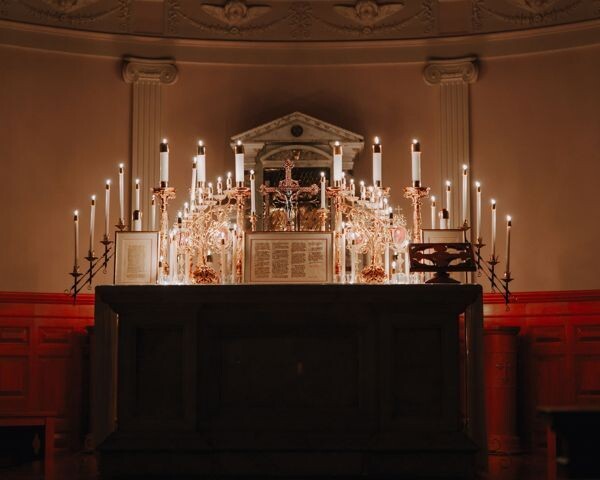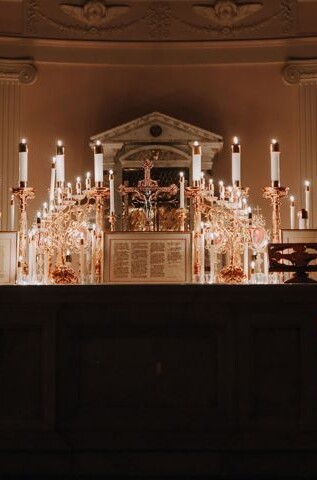
A few parishioners have asked about the relics on the altar at Holy Rosary Church and why we have them. These relics are bodily remains of saints and martyrs. The Second Council of Nicaea in 787 AD officially approved and declared that relics deserve reverence and veneration but not adoration, which is reserved only for God. Throughout history, the relics of saints have been enshrined on church altars as a means of highlighting their sacred nature and providing a point for veneration during the celebration of the Mass. That is why during adoration of the Blessed Sacrament, the priest removes all of the relics on the altar so that the focal point of adoration is on the Eucharist. The practice of having relics on or below the altar is rooted in the communion of saints, the veneration of saints, and the continuity of tradition within the Church. The biblical foundation for this practice can be found in several passages from the Old and New Testaments.
In the Old Testament, there are instances of relics or sacred objects being revered and used as a means of connecting with God's presence. For example, the Ark of the Covenant (Exodus 25:10-22) was considered a sacred vessel that held the stone tablets inscribed with the Ten Commandments, symbolizing God's covenant with His people. The Ark was kept in the Holy of Holies in the tabernacle and later in the Temple of Jerusalem, signifying God's presence among the Israelites. In the New Testament, there are accounts of miraculous healings and special powers associated with relics or objects touched by holy individuals. For instance, in Acts of the Apostles 19:11-12, it is mentioned that handkerchiefs and aprons that had touched the body of the Apostle Paul were taken to the sick, and their illnesses were healed and evil spirits were driven out.In Matthew 9:20-22, a woman is healed by touching the cloak of Jesus.In Mark 6:56, people brought the sick to Jesus, and all who touched his cloak were healed.In regards to relics on the altar, in Revelation 6:9,the author had a vision of seeing "under the altar the souls of those who had been slain for the word of God and for the testimony which they held. And they cried with a loud voice, saying, “How long, O Lord, holy and true, until You judge and avenge our blood on those who dwell on the earth?”
As for the twelve relics on the altar at Holy Rosary, this is the list in chronological order of the saint's feast day:1.St. Elizabeth Ann Seton (January 4) 2.St. Blaise (February 3) 3.Blessed Imelda, OP (May 13) 4.St. Rita of Cascia (May 22) 5.St. Maria Goretti (July 6) 6.Holy Martyrs of Gorkum, OP (July 9) 7.St. Pius X (August 21) 8.St. Gregory the Great (September 3) 9.St. Juan Macias, OP (September 18) 10.St. Vincent de Paul (September 27) 11.St. Teresa of Jesus (October 15) 12.St. Martin de Porres, OP (November 3)
The veneration of relics is one way for us to connect with the holiness and intercession of these saints, seeking their prayers and assistance.It's important, however, to understand that the veneration of relics is a devotional practice and is not explicitly required for salvation. As with many traditions, the practice of venerating relics is one way for us Catholics to express our faith, devotion, and connection to the history and saints of the Church. -Fr. Peter Do, OP

